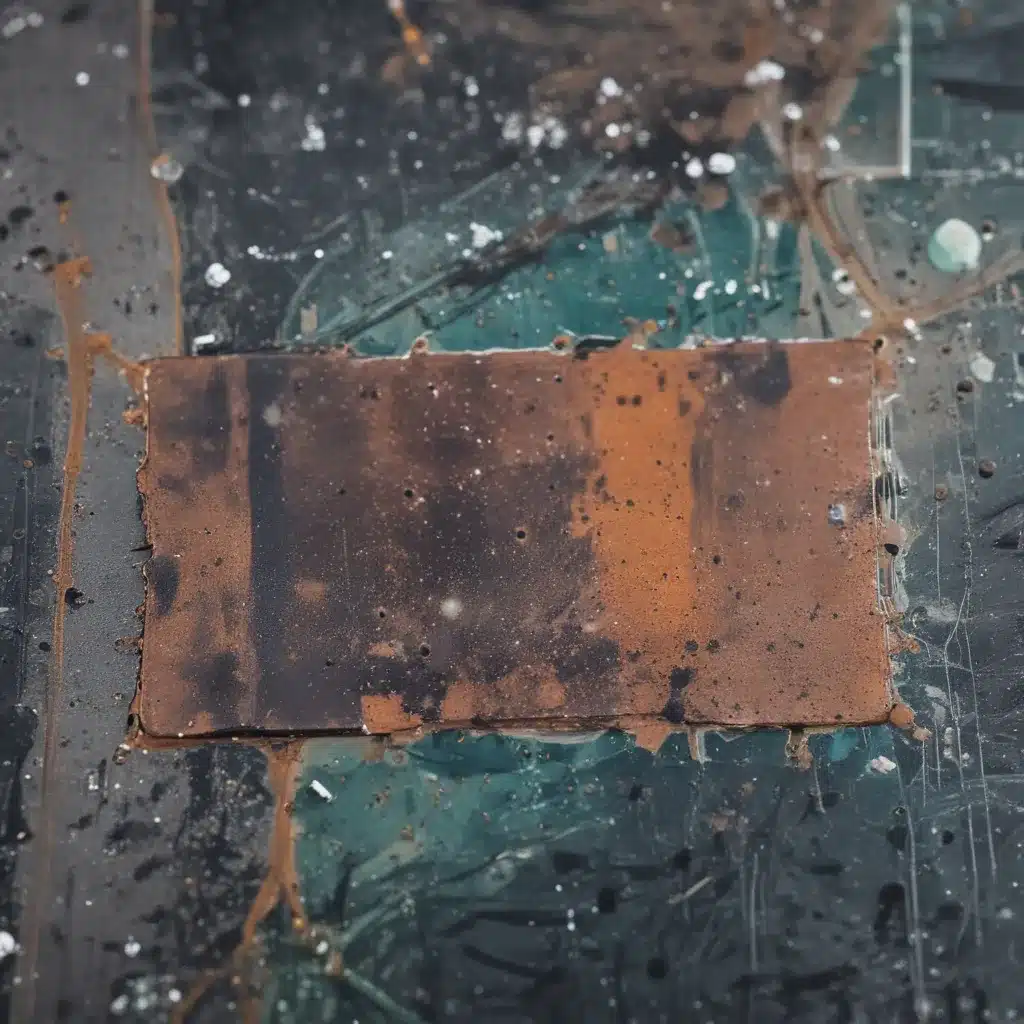Battling the Bane of Batteries: A Journey Through Corrosion Cleanup
Oh, the perils of battery-operated electronics! We’ve all been there – you open up your remote control, gaming controller, or wireless mouse, only to find a crusty, white mess staring back at you. Yep, battery corrosion has struck again, leaving your precious devices in a state of disarray.
But fear not, my fellow tech enthusiasts! In this comprehensive guide, I’ll take you on a journey through the world of corrosion cleanup, arming you with the knowledge and tools to revive your electronics and send that nasty gunk packing.
Understanding the Curse of Corrosion
First things first, let’s dive into the science behind this battery-powered blight. Corrosion, in simple terms, is the steady breakdown of metal due to a chemical reaction. When metal combines with oxygen and water, it forms that unsightly substance we know as rust. [1] And in the case of electronic devices, it’s not just the metal that’s affected – the corrosion can also disrupt the electrical connections, causing all sorts of malfunctions.
The speed at which corrosion sets in depends on a variety of factors, including the device’s design, the duration of water exposure, and the humidity levels in the environment. [2] So, while a device might seem unscathed immediately after a spill, it’s only a matter of time before the dreaded corrosion takes hold.
Gearing Up for the Battle
Now that we understand the enemy, it’s time to assemble our cleaning arsenal. The good news is, you probably already have most of the necessary items lying around the house. Here’s what you’ll need:
- Protective gloves (cloth or synthetic rubber)
- Cotton swabs
- Lemon juice or white vinegar
- Baking soda
- Isopropyl alcohol (90% or higher)
- Microfiber cloth
- Pencil eraser
- Compressed air
Remember, battery corrosion is a base on the pH scale, so we’ll be using acids like lemon juice or vinegar to neutralize it. [3] The baking soda, with its abrasive properties, will help scrub away any stubborn residue. [4] And the isopropyl alcohol will ensure a thorough cleanse, removing any leftover gunk without leaving behind any additional moisture. [5]
Unleashing the Cleaning Power
Alright, let’s get to work! First, make sure the device is powered off, and remove the batteries. This will prevent any potential short circuits or further damage during the cleaning process. [6]
Using a cotton swab, apply a few drops of lemon juice or vinegar directly to the corroded areas. Watch as the white, crusty discharge starts to fizz and dissolve. [7] Next, take a baking soda paste (made by mixing baking soda and water) and gently rub it into the affected areas with a cotton swab. [4] This abrasive action will help remove any remaining traces of corrosion.
Once you’ve tackled the visible gunk, it’s time to use the isopropyl alcohol. Dampen a microfiber cloth with the high-percentage alcohol and wipe down the entire area. This will ensure a complete removal of any leftover residue. [5] Finally, use a pencil eraser to polish any small, stubborn spots, and finish off with a blast of compressed air to clear away any lingering debris.
Preventing Future Flare-Ups
Now that your device is sparkling clean, it’s time to put some preventative measures in place. The key is to avoid exposing your electronics to the three main culprits of corrosion: moisture, contaminants, and temperature extremes. [8]
Always store your devices in a cool, dry place, and be mindful of any sudden changes in temperature or humidity levels. When it comes to batteries, never mix old and new ones, and always replace them before the expiration date. [6] And if you do happen to spill something on your device, act quickly to wipe it down and remove the batteries.
Reclaiming Your Tech Treasures
With the right approach and a little elbow grease, you can breathe new life into your corroded electronics. Remember, a thorough cleaning can often restore your devices to their former glory, saving you the hassle and expense of replacement.
So, the next time you encounter the dreaded white plague in your battery compartment, don’t panic – just grab your cleaning supplies and get to work. Your tech treasures are counting on you to vanquish the corrosion and keep them running like new.
References:
[1] https://www.ourpcb.com/remove-corrosion.html
[2] https://www.prismspecialties.com/blog/2020/11/16/how-to-clean-battery-corrosion-off-electronics/
[3] https://www.reddit.com/r/AskElectronics/comments/iwzbk7/best_way_to_remove_stubborn_corrosion_ive_used/
[4] https://www.reddit.com/r/howto/comments/104call/remove_corrosion_from_an_electronic_device/
[5] https://www.nytimes.com/wirecutter/reviews/how-to-clean-battery-corrosion/
[6] https://www.prismspecialties.com/blog/2020/11/16/how-to-clean-battery-corrosion-off-electronics/
[7] https://www.youtube.com/watch?v=z7ihHyBwyRU
[8] https://www.ourpcb.com/remove-corrosion.html













